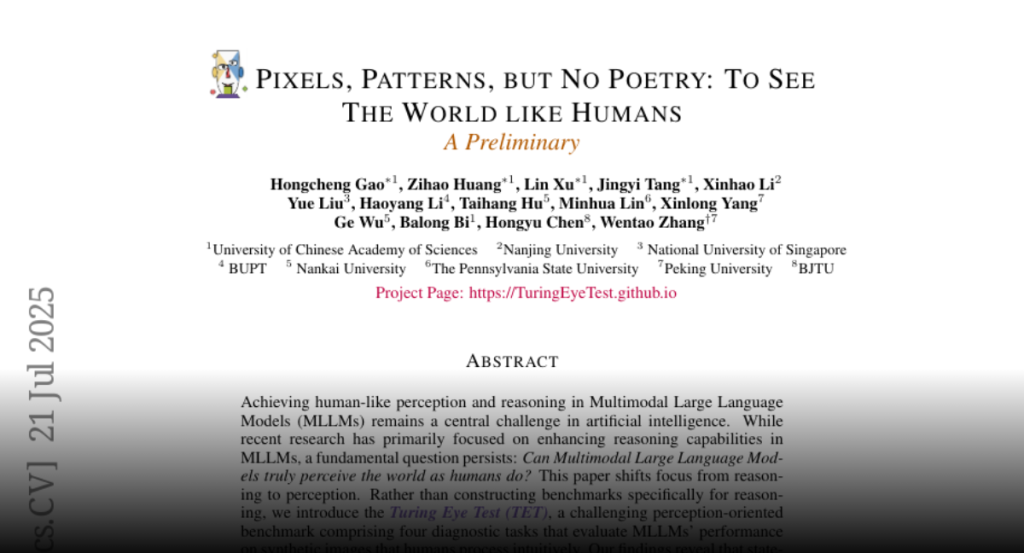The Turing Eye Test evaluates MLLMs’ perceptual abilities through synthetic images, revealing that vision tower generalization is a significant gap compared to human perception.
Achieving human-like perception and reasoning in Multimodal Large Language
Models (MLLMs) remains a central challenge in artificial intelligence. While
recent research has primarily focused on enhancing reasoning capabilities in
MLLMs, a fundamental question persists: Can Multimodal Large Language Models
truly perceive the world as humans do? This paper shifts focus from reasoning
to perception. Rather than constructing benchmarks specifically for reasoning,
we introduce the Turing Eye Test (TET), a challenging perception-oriented
benchmark comprising four diagnostic tasks that evaluate MLLMs’ performance on
synthetic images that humans process intuitively. Our findings reveal that
state-of-the-art MLLMs exhibit catastrophic failures on our perceptual tasks
trivial for humans. Both in-context learning and training on language
backbone-effective for previous benchmarks-fail to improve performance on our
tasks, while fine-tuning the vision tower enables rapid adaptation, suggesting
that our benchmark poses challenges for vision tower generalization rather than
for the knowledge and reasoning capabilities of the language backbone-a key gap
between current MLLMs and human perception. We release a representative subset
of TET tasks in this version, and will introduce more diverse tasks and methods
to enhance visual generalization in future work.

